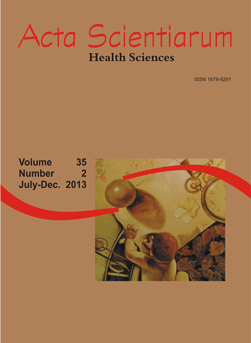<b>The age marker as a predictive indicator for frailty syndrome in the elderly</b> - doi: 10.4025/actascihealthsci.v35i2.12489
Abstract
The objective of the study was to analyze the age marker in males and females as a predictor of the absence of frailty syndrome in the elderly. This was a cross-sectional study with 624 individuals. Receiver Operating Characteristic (ROC) curves were constructed and compared to areas of age, gender and absence of frailty. Cut-off points for age (years) were established to predict the absence of frailty (95% CI). The largest areas under the ROC curve for age were found for females. It was observed that the age of 72 years (women) or 67 (men) were the best cut-off points for predicting the absence of frailty. The age marker can serve as an important indicator in selecting priority groups for certain interventions.
Downloads
DECLARATION OF ORIGINALITY AND COPYRIGHTS
I Declare that current article is original and has not been submitted for publication, in part or in whole, to any other national or international journal.
The copyrights belong exclusively to the authors. Published content is licensed under Creative Commons Attribution 4.0 (CC BY 4.0) guidelines, which allows sharing (copy and distribution of the material in any medium or format) and adaptation (remix, transform, and build upon the material) for any purpose, even commercially, under the terms of attribution.
Read this link for further information on how to use CC BY 4.0 properly.























5.png)







